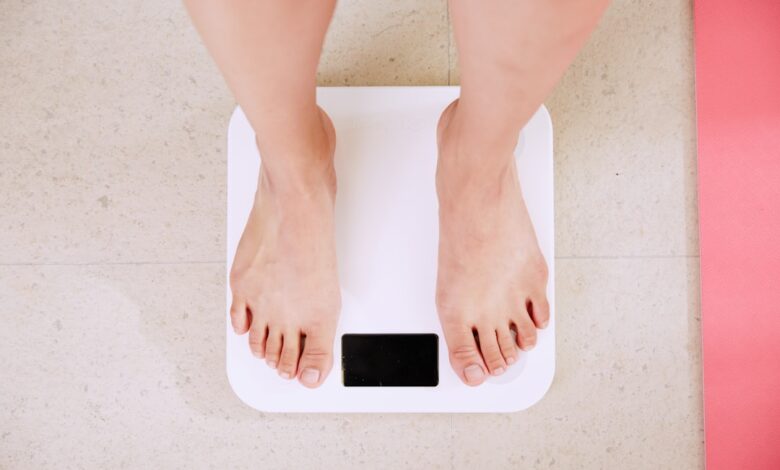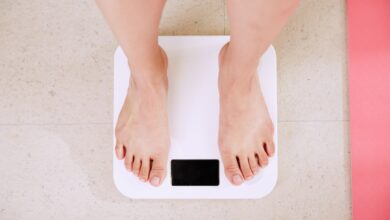6 Secrets Trainers Don’T Tell You About Fat Loss

So, you’re on a mission to lose fat? That’s awesome! You’re probably hitting the gym, maybe even working with a trainer. But sometimes, even with all that effort, the results don’t come as quickly as you’d hoped. Why is that? Well, as a fitness expert with years of experience, I’m here to let you in on a few secrets trainers don’t always share – not because they’re trying to hide anything, but because these nuances are often overlooked or require a deeper understanding of your individual needs.

The Truth About Calories (It’s More Than Just a Number)
Everyone knows that fat loss comes down to burning more calories than you consume. But what trainers sometimes gloss over is that not all calories are created equal. Your body processes calories from protein, carbs, and fats differently. Protein, for example, has a higher thermic effect, meaning your body burns more calories digesting it compared to carbs or fats. Also, where you are in your cycle as a woman can play a HUGE role in how your body uses (or doesn’t use) calories. If you are experiencing severe period problems, it is best to consult with a doctor. This is so important to know!
Furthermore, the *quality* of your calories matters. Eating 100 calories of processed junk food is vastly different from eating 100 calories of whole, unprocessed foods. The latter will keep you feeling fuller for longer, provide essential nutrients, and support your overall health, making it easier to stick to your calorie goals. Focus on whole, single-ingredient foods as much as possible.
Muscle is Your Metabolism’s Best Friend
Cardio is great for burning calories in the moment, but building muscle is what truly cranks up your metabolism. Muscle tissue is metabolically active, meaning it burns more calories at rest than fat tissue. So, the more muscle you have, the more calories you’ll burn throughout the day, even when you’re just sitting on the couch watching TV.
Trainers often emphasize cardio because it’s a visible and measurable activity. But don’t neglect strength training! Incorporate exercises that work all your major muscle groups (legs, back, chest, shoulders, arms) at least 2-3 times per week. Lift weights that challenge you – you should feel like you could only do a few more reps with good form. As you get stronger, increase the weight or resistance.
Stress: The Silent Fat Loss Saboteur
Chronic stress can wreak havoc on your body and make fat loss incredibly difficult. When you’re stressed, your body releases cortisol, a hormone that can promote fat storage, especially around your abdomen. Cortisol can also increase cravings for sugary and fatty foods, making it even harder to stay on track with your diet. This is one of the biggest reasons for failure for women especially!
Managing stress is crucial for successful fat loss. Find healthy ways to cope with stress, such as exercise (yes, even more than just strength training!), meditation, yoga, spending time in nature, or talking to a therapist. Prioritize sleep, as lack of sleep can also increase cortisol levels.
Sleep: The Underrated Recovery Tool
Speaking of sleep, it’s not just important for stress management; it’s also essential for muscle recovery and hormone regulation. When you’re sleep-deprived, your body produces less leptin (a hormone that signals fullness) and more ghrelin (a hormone that stimulates appetite). This combination can lead to increased hunger and cravings, making it difficult to resist unhealthy foods.
Aim for 7-9 hours of quality sleep per night. Create a relaxing bedtime routine, avoid caffeine and alcohol before bed, and make sure your bedroom is dark, quiet, and cool.
Consistency Trumps Perfection
Many people get discouraged when they slip up on their diet or miss a workout. They think, “I’ve already messed up, so I might as well give up.” But that’s the wrong attitude! Fat loss is a journey, not a destination. There will be bumps in the road. The key is to be consistent over time, not perfect all the time. Don’t let a single bad day derail your entire progress.
Focus on making small, sustainable changes to your lifestyle that you can stick with long-term. Instead of trying to overhaul your entire diet overnight, start by adding more fruits and vegetables to your meals. Instead of aiming for a grueling workout every day, commit to 30 minutes of exercise most days of the week. Small changes add up over time.
Your Body is Unique: Listen to It!
Every body is different, and what works for one person may not work for another. Don’t blindly follow a generic diet or workout plan. Pay attention to how your body responds to different foods and exercises. Experiment to find what works best for you. You may also need to adjust what you’re doing based on things like being pregnant, peri-menopausal, or having other health issues.
If you’re working with a trainer, don’t be afraid to ask questions and voice your concerns. A good trainer will listen to your feedback and tailor your program to your individual needs and goals. If you are experiencing any pain during exercise, it is so important to stop and rest. If the pain persists, seek the help of a medical professional.
Frequently Asked Questions
How long will it take to see results?
The timeline for fat loss varies depending on several factors, including your starting point, genetics, diet, exercise routine, and consistency. Generally, you can expect to see noticeable changes within a few weeks to a few months of making consistent efforts. Remember to focus on progress, not perfection, and celebrate your small wins along the way. Try to avoid comparing your journey to others. You don’t know what those people have done to get to where they are!
What’s the best type of cardio for fat loss?
The best type of cardio is the one you enjoy and can stick with consistently. High-intensity interval training (HIIT) is often touted as the most effective for fat loss due to its calorie-burning and metabolism-boosting effects. However, low-intensity steady-state cardio (LISS), such as walking, jogging, or swimming, can also be effective and is often easier to sustain for longer periods. Ultimately, the key is to find activities that you find enjoyable and that fit into your lifestyle.
Should I cut out carbs to lose fat?
Cutting out carbs entirely is generally not necessary or sustainable for most people. Carbs are an important source of energy for your body, and they can also provide essential nutrients. Instead of eliminating carbs, focus on choosing complex carbs, such as whole grains, fruits, and vegetables, over refined carbs, such as white bread, pasta, and sugary drinks. Portion control is also important. Some people find that a lower-carb approach works well for them, while others thrive on a more balanced diet. It’s important to experiment to find what works best for your body.
Can I lose fat without exercise?
While it’s possible to lose fat through diet alone, exercise can significantly enhance your results. Exercise helps you burn more calories, build muscle, and improve your overall health and well-being. A combination of diet and exercise is generally the most effective approach for sustainable fat loss.
Losing fat is a journey that requires patience, consistency, and a willingness to learn and adapt. By understanding these “secrets” that trainers may not always explicitly tell you, you can empower yourself to make informed choices and achieve your fat loss goals. Remember to focus on making sustainable lifestyle changes, prioritizing your overall health and well-being, and listening to your body. Good luck!



